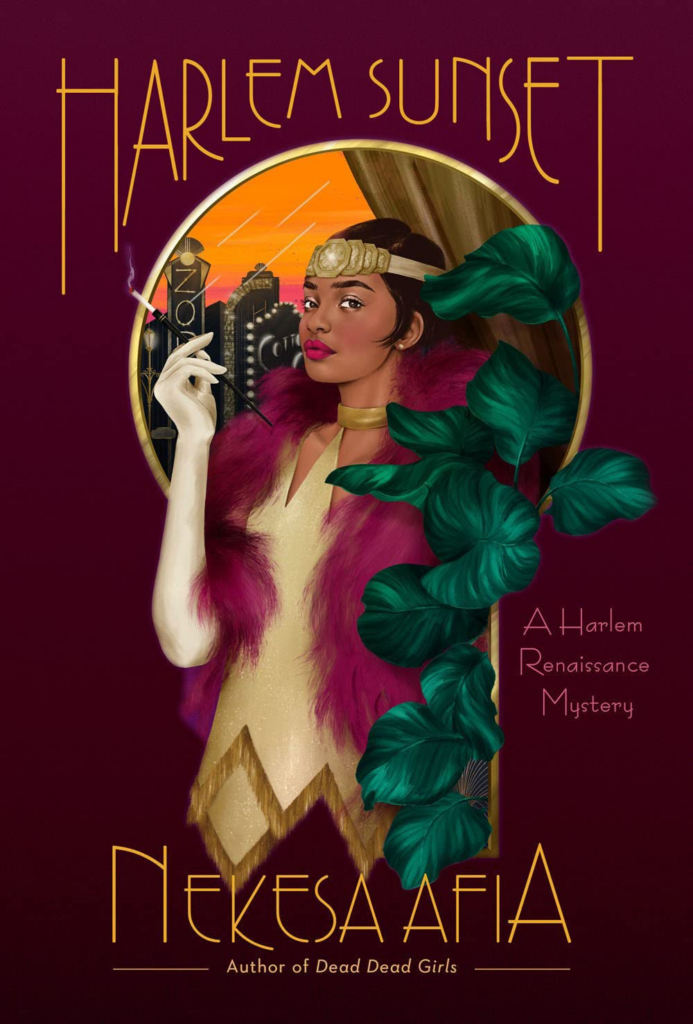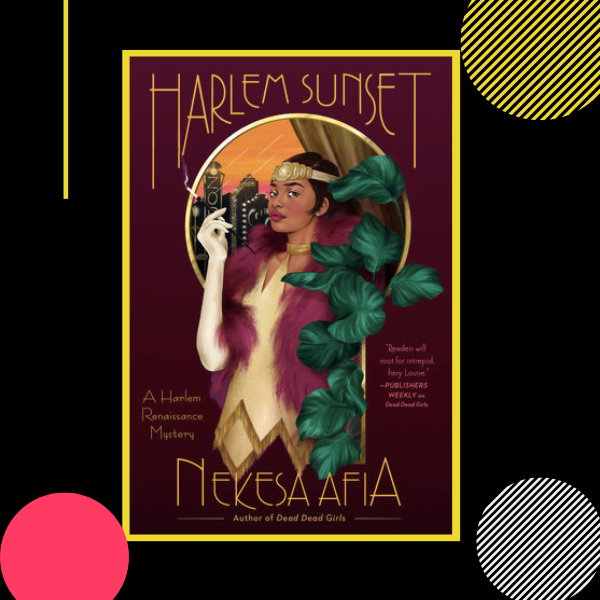Synopsis
Content Warning: Murder, Kidnapping, Abuse
Harlem Sunset by Nekesa Afia is part of her Harlem Renaissance Mystery series.
In Harlem 1927, Twenty-seven-year-old Louis Lloyd, a Black woman, became manager of the Dove, a club, owned by her close friend, Rafael Moreno. After a night of drinking and talking with Rafael, Rosa Maria, and Louise, Nora, Louise’s friend who she was kidnapped a decade ago, is lying dead in the middle of the dance floor. Rosa Maria, Louise’s girlfriend, wakes up covered in blood with no recollection of the night before.
Louise knows Rosa Maria did not kill Nora. The police think otherwise. Someone is also going to great lengths to make them guilty, even writing GUILTY on their apartment wall that looks like blood. Louise will stop at nothing to protect Rosa Maria, the woman she loves, and bring Nora’s murderer to justice.

Review
Reading a mystery with these characters is captivating. The breath of varied characters compliments the drama, action, and mystery that meets the page. The dialogue is poetic as much as it is gripping.
Black newspapers in the story have a great role in tandem with the era of the late 1920s. Louise reads the Tribune, where Rosa Maria works as a typist. However, the paper becomes a nightmare for Louise, milking every lie dry about her to sell papers. I learned this is called yellow journalism. The Negro Voice was about news as much as it was uplifting “writings and collections for Black people by Black people.”
Louise and Rosa Maria’s relationship is sensual and loving. I could have read a tome about them gazing at each other. The quietness between them is gorgeous. As much as they loved each other, there was this notion that they could not truly be together. They were not holding hands in the streets or in each other’s embrace. The privacy of their relationship was a secret.
At the same time, Louise’s relationship with her sisters, Josie and Minna, is a pivotal piece of her character. Josie is seventeen-years-old. She is expected to get married and make a family of her own or she’ll never settle down. Louise tells Josie that she “loves Rosa Maria the way women are supposed to love men.” She shares with Josie that she does not like men, and that was why she has not gotten married. What was once a secret becomes a deeper connection between Louise and Josie. Minna is warped on being an archetypal wife and mother. The distance between Louise and Minna is due to expectations. As was said, they “would never see eye to eye and that was fine.”
I would have liked more of Harlem in Harlem Sunset, especially the vibrancy of the neighborhood. I think of Harlem as the fifth borough. Trouble follows Louise to almost being a second skin. Scenes were mostly in the apartment or where Louise was laying low. While the story does not let up for much partying, the glamour of the era was non-existent.
Louise Lloyd is determined, dealing with demons and triumphing with determination and love. I hope there is more of Rosa Maria. I did not read the first book, Dead Dead Girls, although I will be. A great sequel carries on the story like a thread without missing a beat.
Thank you, Berkley Publishing, for an advanced digital copy of Harlem Sunset.


